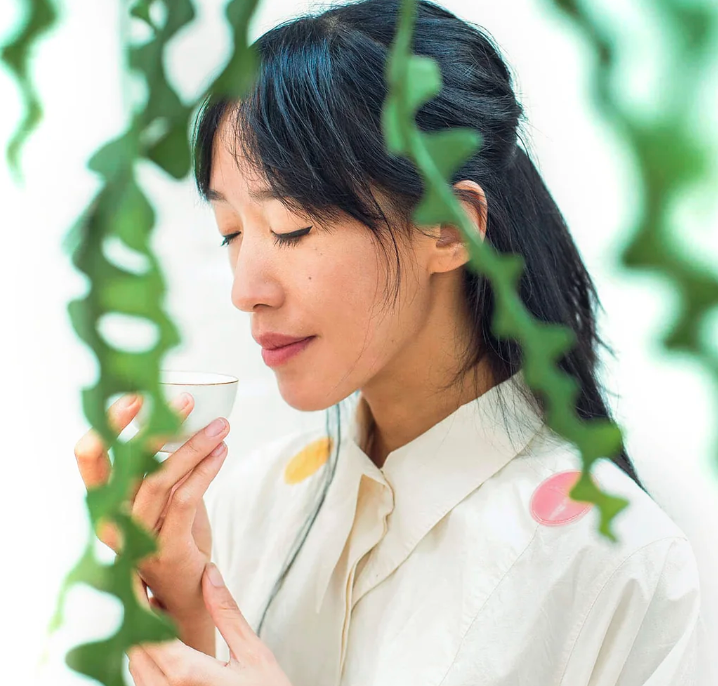

Life of a Tea Maker, Challenges & Sustainability: A Conversation with Rui (Grass People Tree)
What is the Tea Industry and Who are Its Key Players?
The tea industry is a global business that has been around for centuries. It is estimated to be worth over $60 billion and is growing rapidly. Tea is grown in many countries around the world, from India and China to Kenya and Sri Lanka. The major players in the tea industry include producers, processors, distributors, retailers, and consumers. Producers grow the tea leaves while processors package them into different forms such as loose-leaf or bagged teas. Distributors then transport the products to retailers where they are sold to consumers. Consumers can buy tea from supermarkets or specialty stores, or they can even purchase it online. The key players in the tea industry are working together to ensure that everyone has access to quality tea at an affordable price.
Understanding the Life of a Tea Farmer and Their Challenges
Tea farmers (growers or cultivators) are a vital part of the global tea industry, yet their lives and challenges are often overlooked.
Tea farming is an incredibly difficult job that requires hard work and dedication. Farmers must contend with unpredictable weather conditions that can make or break their crops in a single season. Tea growers are finding it difficult to benefit financially from their endeavor despite all the effort they put in. This is mainly caused by unfair trade practices in the industry; most of them are not paid the real value for their labor and products, resulting in inadequate wages and an inability to improve their lives or those of their families. This is a problem that requires urgent attention from governments, advocacy groups, and consumers alike in order to ensure that tea farmers receive fair compensation for their work.
Tea growers must also deal with pests and diseases that can destroy entire crops if not properly managed.

The Impact of Climate Change on Tea Production & Sustainability
Climate change is having a major impact on the tea industry, and it is essential for tea producers to find sustainable solutions to ensure the long-term viability of their businesses. Rising temperatures, increased drought and floods, and other extreme weather events are all contributing factors to declining yields in tea production. This has led to an increase in prices and a decrease in quality of many teas. In order to remain competitive, tea producers must adopt sustainable practices that reduce their carbon footprint and protect their crops from the effects of climate change. This includes using renewable energy sources, investing in efficient irrigation systems, and conserving water resources. By taking these steps, tea producers can ensure that their businesses remain economically viable while also protecting the environment for future generations.
Even though we cannot control nature, it is our responsibility as inhabitants of this planet to consume consciously and take care of the environment. If we do not, Mother Nature will surely punish us in various ways, and we should learn from these lessons.
In order to throw more light on the issue, I invited Rui from Grass people tree to share her valuable inputs. We have the privilege of delving into an insightful interview with Rui, a renowned tea expert and sustainability advocate. As we explore the world of tea cultivation and its environmental implications, Rui shares her profound knowledge and thought-provoking perspectives.
As the demand for tea continues to rise and environmental concerns come to the forefront, understanding the perspectives of tea growers and sustainability advocates like Rui becomes increasingly vital. This interview sheds light on the challenges faced by tea farmers, the impact of consumer choices, and the significance of cultural appreciation. Whether you’re a tea enthusiast, an environmentalist, or simply curious about sustainable practices, this interview offers a wealth of knowledge and inspiration.
Conversation with Rui:
Vedika: Can you tell me a little bit about your background? And how did you get started in tea?
Rui: I was a fashion model at the age of 16, so I left home early to live abroad and eventually, I settled in London to pursue my master’s degree. However, around 2013-2014, I reached a point where I felt the need for change because the fashion industry was suffocating. I started organising tea gatherings for people in the fashion industry dealing with heavy workloads, stress, and substance abuse. It became a weekly sober gathering for people to come together. Something clicked inside me, and I decided to return home to explore this idea. Although I wasn’t directly involved in tea making before, it was deeply ingrained in my upbringing, as my grandparents used to make teas. However, it wasn’t anything fancy, unlike what we consider tea in the West or modern-day China. During my planned six-month journey back home, I immersed myself in learning about tea, which ended up spanning three years. I extensively explored my province in southwest China, where I met my current tea mentor. One day, I walked into a tea house where he was brewing tea, dedicating hours to the process. He invited me to try it, and from that moment, Grass People Tree, before it had a name or brand, was born. Master Lin started sharing with me the stories, culture, and craftsmanship behind tea, including the traditional approach and the wild and indigenous tea trees. This opened my eyes to a world I had never seen before, even as a local. Although we drank tea, I never realised how special and ancient some of the tea trees were, with roots that went deep and were centuries old. Seeing the extensive scale of farming genetically modified species, which had wiped out many ancient native species, was shocking to me. They had to uproot the old trees to make room for genetically modified ones that prioritised high production volumes. Most of these new tea plants didn’t grow from seeds, and their flavours and qualities were vastly different. This process made me realise the importance of preserving traditional practices and connecting with my roots. Most of our teas come from healthy indigenous tea trees in Guizhou, which provide a mix of different flavours and characteristics. It has been around six to seven years since I embarked on this tea journey.
Vedika: Can you share a little more about these wild indigenous tea trees?
Rui: The trees are around 300 – 1500 years old. But it’s not like the older the better. In Guizhou, tea harvesting is not a simple task of picking from conveniently lined-up rows on a plantation. Foraging from the ancient and indigenous tea trees is a distinct practice that requires tea pickers to know where to find them and utilise ladders to reach the highest branches of these old trees. It’s quite a journey.
Vedika: That is actually where my next question comes in. When you’re farming and maintaining a tea plantation, there are so many things that you can control. But you can’t really do that if you’re picking tea from wild tea trees, which, as you said, aren’t like the tea grown in neat rows in plantations. So, what specific challenges do you face that might be different from those faced by traditional tea farmers in cultivated tea gardens? And what challenges would farmers using non-native tea species face? I’m particularly interested in learning about the impact of climate change, as it seems to be a major issue for tea farmers today.
Rui: One of the main challenges we face with wild tea tree foraging is the unpredictable nature of climate change. The climate variations can cause delays or early harvesting, making it difficult to determine the ideal time for picking. This is a common challenge faced by all farmers in general.
We have a tea called Masters Red, a black tea that has been crafted by our master’s family for generations. Last year, due to unusual weather conditions, the tea batch turned out to be a hybrid of black tea and oolong tea instead. This change in taste was a direct result of the weather affecting the tea leaves’ enzymatic transformations during processing. It is a clear example of how climate change impacts the craftsmanship and traditional tea-making practices that have been passed down for centuries.
Tea plantations using non-native tea species might face challenges related to climate change and uncertainties, just like us. However, they may also encounter additional difficulties. To compensate for the tea plants’ non-native habitat, human interventions such as pesticides and fertilisers may be necessary to ensure production volume. This reliance on artificial means can affect the purity and quality of the tea.
Overall, climate change is a universal challenge for everyone involved in tea, but the specific challenges faced by individuals depend on their practices, tea species, and environmental conditions. We strive to navigate these challenges and continue producing high-quality teas, despite the ever-changing circumstances. It’s a difficult and sometimes disheartening journey, but we remain determined to preserve the art of tea-making amidst these challenges.
Vedika: That’s scary. Like, there was a flood recently in the state of Assam, India and because of that, a lot of crops got destroyed. So, I think different areas are going through different issues because of climate change.
Rui: It’s impossible to predict the weather because every day, when the team is in the process of making a batch, you do not sleep, and you do not stop, because time doesn’t stop, nature doesn’t stop. So, you know, from six o’clock in the morning to 10 o’clock, there can be more than 30 different elements that affect the transformation from tea leaves into a tea beverage. So, when one thing changes, everything else changes, and then the way you respond to the tea leaves has to change. And sometimes, you have to be very quick in making decisions, like firing, for example. Usually, it takes hours for the whole process because you have to make adjustments to the firing wood based on the ambient temperatures, different times of the day, and even different batches. The variability is so significant, and controlling the fire is also very difficult. Also, the dryness of the woods and how you age them are affected by the weather.
Vedika: It’s truly disheartening. So, in situations of drought or insufficient water availability, do you have any alternative sources of water for your farm, specifically for the trees you cultivate? Or are there no alternative water sources available?
Rui: No, there are no alternative sources of water for the wild tea trees. Although drought and water scarcity can be challenging, the environment has shown remarkable resilience throughout history. Unless faced with extreme circumstances like widespread fires, the ecosystem can adapt and endure. However, if we continue to consume resources at an unsustainable rate, it may eventually lead to a future where our landscapes resemble barren fields with genetically modified crops.
Vedika: So, what you’re trying to say is that, despite our high consumption, we are not actively replenishing or planting at the same rate.
Rui: Yes, exactly. As humans, we tend to consume more than we truly need. We indulge in three meals a day and excessive amounts of tea, among other things. We have this constant desire for more, and this excessive consumption, coupled with the pressure from economies to keep consuming, makes it challenging to slow down and be conscious of our actions. It’s no wonder that we are depleting our resources at an alarming rate. The constant demand for more puts immense strain on our natural environment. It’s a worrying situation, and it’s hard not to feel pessimistic about it.
Vedika: Like I mentioned earlier, every perspective holds importance. It’s crucial to be aware of these facts. Speaking of which, I must admit I’m feeling a bit guilty right now. As a tea blogger, I receive a lot of tea samples. Part of it is due to peer pressure, seeing everyone in the tea community on Instagram trying out various teas from different countries, regions, and brands. I don’t want to be left behind in this kind of competition. So, I end up spending a significant amount of money on purchasing teas, even if the shipping charges are high. But now, as you mentioned, our excessive consumption is having an impact on nature and the people involved in this industry. It’s something I truly need to contemplate: Do I really need such a vast quantity of tea?
Rui: So, my suggestion or advice based on my experience is to reflect on our intentions and motivations. Why do we desire more? Is it driven by the fear of missing out or the influence of social media? It’s easy to fall into that trap. If we can clarify our intentions and not be driven solely by external factors, it can make a difference. Additionally, I’ve noticed that when I drink tea, I believe that everything I consume contributes positively to the tea itself and the people who drink it. It’s about sharing positivity and raising awareness about the reality of tea production. I assume that, like me, you’re not the kind of consumer who mindlessly tosses a tea bag away after use. That’s precisely why you started your blog, to learn more, understand more, and share that knowledge with others. So, intention plays a vital role. It’s not just about making ourselves feel better; it’s about having clarity.
Vedika: So, in your personal life, do you practice any sustainability measures or consciously make choices that benefit the environment?
Rui: For me, the most important practice is having clear intentions and doing the best I can based on those intentions. I believe that my purpose here, including my personal journey and my work with Grass People Tree, is clear. Therefore, I strive to share this clarity with the tea community and consumers alike. Much of my work involves progress in the process of creating awareness and making positive changes.
Vedika: Given the current scenario with climate change, what do you envision for the future of Grace People Tree? Have you thought about your plans for the next five years in light of these changes?
Rui: Education has become a significant focus for us. Over the past year, we have worked on developing our internal mission plan and company values to elevate the perception of tea. In the next five years, our YouTube channel will primarily focus on discussing the origins of tea and the historical narratives associated with it, particularly from this region. I specialise in presenting information from both cultural perspectives in a way that is culturally understandable for both sides.
Cultural appropriation is a concern, whether it’s the teaching of Japanese tea ceremonies or Chinese tea traditions. It is essential for us to have our own narratives and explanations, defining what tea truly is, its origins, and its cultural significance. We aim to make tea more tangible for people. It’s crucial to make space for the old stories to be heard, allowing future generations to create new ones.
I feel positive about the shift in people’s perception, particularly with the younger generations, such as Gen Z, who are health-conscious, intuitive, and inquisitive. Grass People Tree holds a unique standpoint, allowing us to share the stories of tea from both the Western and Eastern perspectives. During my recent visit home, we engaged in conversations with my tea families on how to effectively translate tea into English, understanding the cultural differences and choosing the right words. This exchange aims to support our home community in sharing their stories. We want to prevent our culture from being overshadowed by misleading representations and ensure that our voice is not claimed by others. Personally, this is a cause that ignites a sense of anger, and I’m motivated to do more to bring about change.
Vedika: I have one final question to ask. Considering the current circumstances, do you believe it’s generally preferable to learn from someone who originates from the place or culture you’re interested in? It’s worth noting that there are individuals from the western world who have travelled to China, studied there for a few years, obtained certifications, and independently practiced traditional tea ceremonies. Now they are teaching others. What are your thoughts on this?
Rui: It’s indeed important to consider learning from someone who comes from the place or culture you’re interested in. However, it ultimately boils down to the individual’s intention and the quality of their openness. It can be a complex matter because some people may have well-meaning intentions but also a strong desire to build their self-image or gain followers. It’s essential to question why they are teaching and whether they have truly immersed themselves in the culture, learned the language, and approach it with respect.
An authentic tea person, who is a good teacher, would never claim that there is only one right way to drink tea or impose rigid rules. They would appreciate the nuances and diversity in tea culture. So when someone suggests that there is a single correct way, it may indicate that their ego is speaking rather than a genuine understanding of tea.
Personally, I maintain a level of scepticism when it comes to individuals who come from outside the culture, don’t speak the language fluently, and teach about it. There are numerous layers of nuances in life and culture that can be easily missed without a deep understanding. I appreciate your curiosity and openness in discussing these topics.
Vedika: Rui, I want to sincerely thank you for joining me in this interview. Your willingness to share your insights and experiences has been incredibly valuable. Through our conversation, I have gained a deeper understanding of the importance of intention, cultural exchange, and sustainability in the world of tea. Your passion and dedication to elevating the perception of tea and promoting its rich cultural heritage are truly inspiring. I am grateful for your time and the enlightening discussion we had. Once again, thank you, Rui, for your generosity and for sharing your wisdom with me.
Visit here (About Us – Grass People Tree) to learn more about Grass People Tree.
Now for you, my reader, thank you for investing your time in this interview and blog. My intention was to stimulate your thoughts and encourage reflection on our consumption habits, specifically regarding tea and beyond. I hope this conversation has sparked valuable contemplation on how we can approach consumption more consciously and make positive changes in our lives. Your engagement and consideration are greatly appreciated.
Remember, the power to make a difference lies within each of us. Let us strive to make conscious choices, embracing sustainability and mindful consumption in our everyday lives. Together, we can create a more harmonious and sustainable future for ourselves and the planet we call home. Thank you for being a part of this conversation.
Stay safe & Happy Sipping!



Leave a Reply